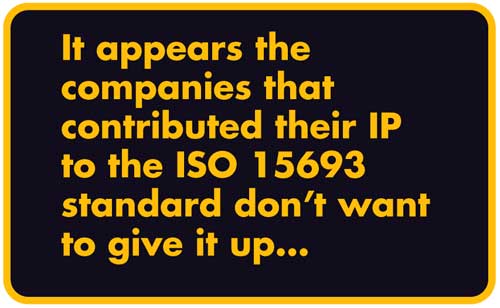Back in January 2007, RFID Journal reported that EPCglobal‘s Hardware Action Group (HAG), which helps develop Electronic Product Code (EPC) standards, was meeting in Sydney later that month to discuss, among other things, a consensus proposal for a high-frequency (HF) EPC air-interface protocol. HAG members had reached a consensus on the overall makeup of the standard and needed only to flesh out the technical details.
The HF standard aimed, we reported, to be backward-compatible with ISO 15693, a well-established HF standard used by many companies, but the read and write speeds would be much faster than those of the current technology. The standard would also have some of the same features included in the Gen 2 ultrahigh-frequency (UHF) standard, such as secure memory modules and the ability to kill the tag permanently for privacy purposes. The goal was to have a ratified EPC HF standard by midyear.
|
|
Two years later, there is still no EPC HF standard. Sources tell RFID Journal the standard has been bogged down over intellectual property (IP). EPCglobal’s policy has been to create RFID standards that are essentially “royalty-free.” That is, features incorporated into the standard can be used in products created by any company without that company having to pay a royalty to the company that patented the idea or technology behind the feature. It appears the companies that contributed their IP to the ISO 15693 standard don’t want to give it up by creating an EPC HF standard that would be similar but royalty-free.
It’s not clear how or when the conflict will be resolved. Many technology companies, but not all, agreed to let their IP be used in the EPC UHF standard. There was no market for UHF separate from EPC at that point, and the companies thought EPC would take off, guaranteeing them huge sales if not a lot of revenue from their IP. Today, the EPC UHF market is growing, but use of EPC data standards is not. Wal-Mart and its suppliers have not ramped up their use of EPC to manage their supply chains. No one believes an EPC HF standard would fare any better, so why give up IP, especially when the market for ISO 15693 transponders is vibrant.
The solution might be to adopt ISO 15693 as the EPC HF standard. This would get around the IP issue (although it would not achieve EPCglobal’s goal of a royalty-free standard), and would mean there would already be a large number of companies with RFID interrogators capable of reading HF tags. Over time, the ISO standard could be modified to include EPC features, such as memory that can be locked and the ability to kill or deactivate tags permanently.
“We believe HF is the right way to go for the pharmaceutical industry,” says one drug company executive. “EPCglobal needs to resolve this issue. If it doesn’t, you won’t see the pharmaceutical companies adopting RFID anytime soon.”



